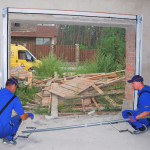 An electric hoist is a vital component of overhead crane handling equipment. It makes it possible to lift suspended loads for positioning or transport and lower them for precise placement. We can also equip the electric hoist with lifting devices such as hooks, magnets, slings, grippers, beams, or vacuum cups. How can teams ensure the stability and reliability of hoist equipment and reduce the risk of worker injury? Integrity Crane & Hoist answers questions on the dos and don’ts of electric hoist operations.
An electric hoist is a vital component of overhead crane handling equipment. It makes it possible to lift suspended loads for positioning or transport and lower them for precise placement. We can also equip the electric hoist with lifting devices such as hooks, magnets, slings, grippers, beams, or vacuum cups. How can teams ensure the stability and reliability of hoist equipment and reduce the risk of worker injury? Integrity Crane & Hoist answers questions on the dos and don’ts of electric hoist operations.
Q: What are the must-dos when it comes to ensuring electric hoist operation safety?
A: When operating an electric hoist, remember to:
- In handling the electric hoist, we must ensure that the lifting equipment’s specifications match the weight and dimensions of the load.
- Read the operator’s manual. This document contains essential information such as electric hoist specifications, inspection criteria, basic troubleshooting procedures, and parts list.
- Require electric hoist equipment operators to know, understand, and adhere to hoist operation guidelines to ensure worker and facility safety.
- Before starting each shift, inspect the electric hoist using a pre-inspection checklist covering critical areas such as operating mechanisms, hoist limit devices, hooks, latches, and lifting media (chain, rope, or strap). In periodic intervals, there should also do inspections.
- Report any instances of hoist equipment malfunction as soon as possible; and should remove that hoist from service immediately
- Confirm that the load is balanced and stable and that the load holding action is secure before proceeding to any lift operation.
- Avoid swinging the load or hook.
- Use hook latches to retain slings or chains under slack conditions.
- Perform regular preventive maintenance procedures, including lubrication, as specified by the manufacturer to ensure long service life.
- Engage independent service and inspection professionals trained to handle hoist equipment specific to your business if outsourcing preventive maintenance and repairs.
Q: Electric hoist should not operate under these circumstances
A: Avoid using electric hoist equipment if:
- The hoist is tagged as out of service.
- The hoist has missing or illegible safety placards or decals.
- The lifting operation goes beyond the travel limits of the load wire rope or chain.
- The load chain is not seated correctly in the chain wheels or sprockets, or the wire rope is not installed correctly in its grooves.
- The hoist has not is not securely attached to suitable support that’s capable of holding the load.
- The load exceeds the capacity rating of the hoist.
- Beneath the hoist, the load is not at the center.
- A hoist has its specific function and use, if not then this has compromised its integrity.
Covering the southeastern United States, Integrity Crane and Hoist, LLC (ICH) is committed to overhead crane service excellence and workplace safety, striving for zero incidents at all times. Call (615) 302-3431 for more information.





